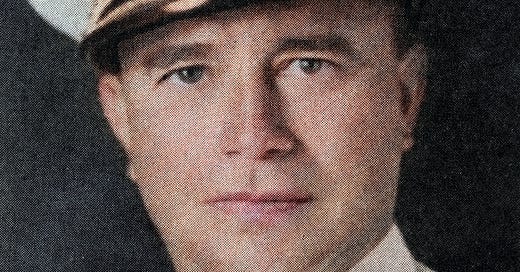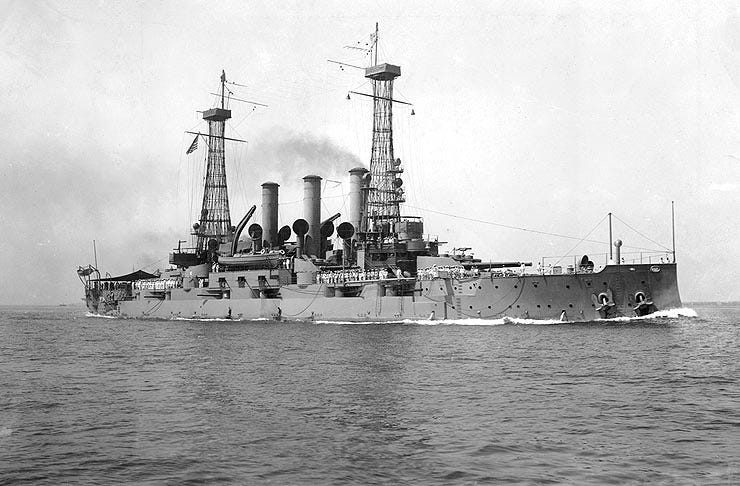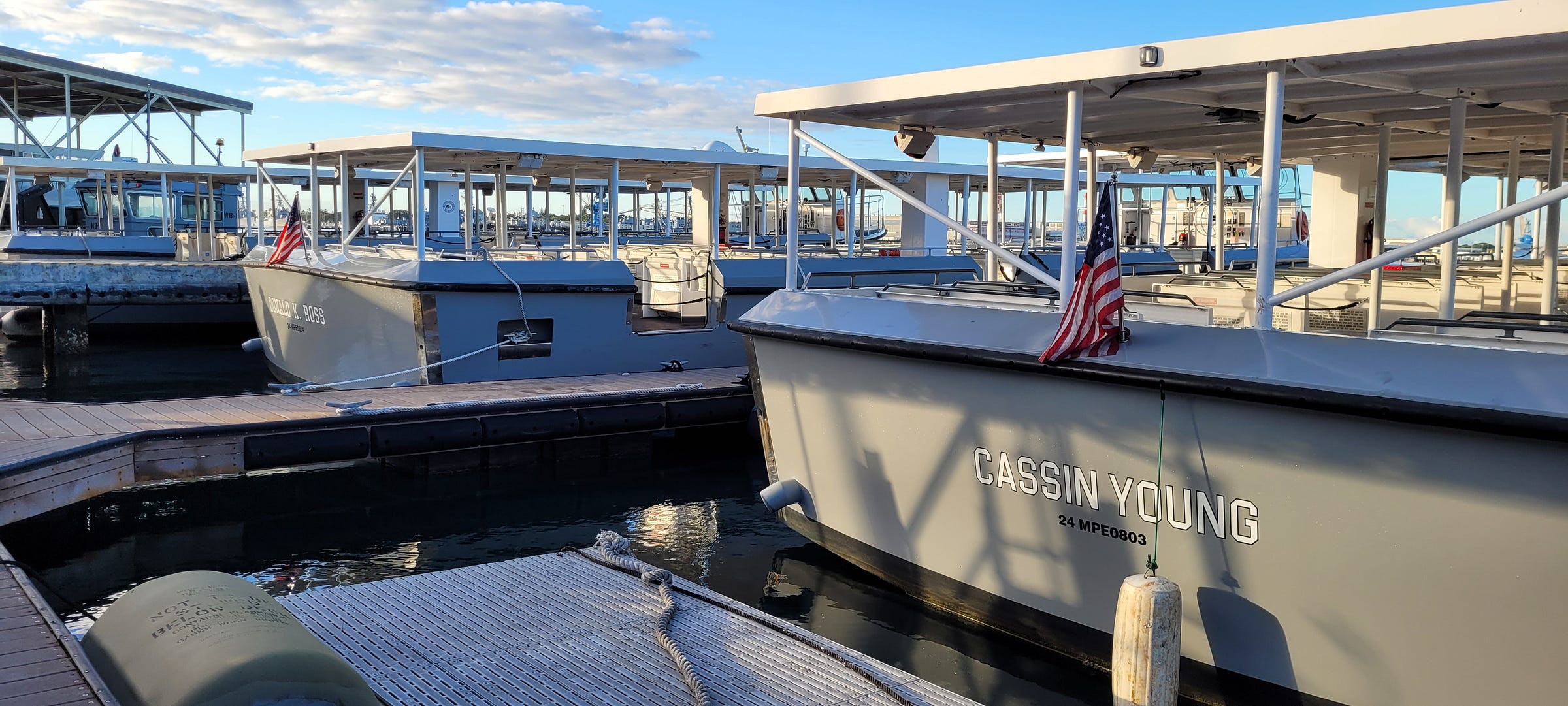The White Boats of Pearl Harbor: Unveiling the Heroic Stories Behind Their Names
Chapter 3: Commander Cassin Young
While a Midshipman at the Naval Academy, Young was known as “Cy” or “Teddy.” The 1916 yearbook “Lucky Bag” said this of him:
Teddy was made to enjoy life — that is, while he is young — but [someday] he’ll grow up and his abilities, which in here were at times obscured by his indifference to mere matters such as regulations, etc., will come to the surface, and Ted will then get the confidence that his abilities deserve.
PRE-WAR SERVICE
Young was born on March 6, 1894, in Washington, DC, and attended the United States Naval Academy. After he graduated on June 3, 1916, he served on board the battleship USS Connecticut (BB-18). In 1919, he moved to submarines and served on board the USS R-22 and R-3 at the submarine base at Coco Solo, Panama.
COAST TO COAST CHILDREN
Young married Eleanor Hayden McFadden in Philadelphia, Pennsylvania in 1919. Their children’s birthplaces represented Young’s duty stations: Charles, born in 1921 in the Canal Zone, Eleanor born in 1923 in Connecticut, Mary born in 1924 in the District of Columbia, Stephen born in 1927 and Joan born in 1936, both in San Diego.
Young was an instructor in the Department of Engineering and Aeronautics at the Naval Academy from 1928 until 1931. His next assignments found him at sea again, on board the battleship USS New York (BB-34), and the destroyer USS Evans (DD-78).
SETTING THE SCENE
On December 7, 1941, Young was the commanding officer of the USS Vestal (AR-4). The repair ship was moored outboard of the battleship USS Arizona (BB-39), portside to portside.
Vestal was hit early in the action by two bombs, one on the port side near the ship’s stern, another starboard, and farther forward. She was also suffering from the raging Arizona fires. The ship’s log indicates that all guns were manned by 8 a.m. and fired on the attacking planes soon after.
Young directed the defense of his ship until the Arizona’s forward magazine exploded and blew Young overboard. Stunned, he managed to swim back through the oil to the heavily damaged Vestal.
Despite flooding, he got the ship underway with steering disabled. A tug helped beach Vestal on the Aiea Shoal near McGrew Point, in the northeastern section of Pearl Harbor.

For his heroism, Admiral Chester Nimitz presented him the Medal of Honor on April 18, 1942, on board the USS Vestal, in Pearl Harbor, Territory of Hawaii.
CITATION
For distinguished conduct in action, outstanding heroism and utter disregard of his own safety, above and beyond the call of duty, as Commanding Officer of the U.S.S. Vestal, during the attack on the Fleet in Pearl Harbor, Territory of Hawaii, by enemy Japanese forces on December 7, 1941. Commander Young proceeded to the bridge and later took personal command of the 3-inch antiaircraft gun. When blown overboard by the blast of the forward magazine explosion of the U.S.S. Arizona, to which the U.S.S. Vestal was moored, he swam back to his ship. The entire forward part of the U.S.S. Arizona was a blazing inferno with oil afire on the water between the two ships; as a result of several bomb hits, the U.S.S. Vestal was afire in several places, was settling and taking on a list. Despite severe enemy bombing and strafing at the time, and his shocking experience of having been blown overboard, Commander Young, with extreme coolness and calmness, moved his ship to an anchorage distant from the U.S.S. Arizona, and subsequently beached the U.S.S. Vestal upon determining that such action was required to save his ship.

POST ATTACK
He was promoted to Captain in February 1942 and took command of the heavy cruiser USS San Francisco (CA-38) on November 9, 1942. Days later, during the Naval Battle of Guadalcanal, he directed his ship in a harrowing gunfight with a superior force with the Imperial Japanese battleship Hiei.
Young was killed in the close, crippling combat and posthumously awarded the Navy Cross for his actions. San Francisco had been spared at Pearl Harbor the year before but was now pounded by 45 shells from all sides. She lost 77 killed and 105 wounded in this battle and received the Presidential Unit Citation. The ship would earn 17 battle stars by the end of the war.
Young’s Navy Cross citation reads:
The President of the United States of America takes pride in presenting the Navy Cross (Posthumously) to Captain Cassin Young (NSN: 0–9615), United States Navy, for extraordinary heroism and distinguished service in the line of his profession as Commanding Officer of the Heavy Cruiser U.S.S. SAN FRANCISCO (CA-38), during an engagement with Japanese naval forces near Savo Island on the night of 12–13 November, 1942. On this occasion the force to which Captain Young was attached engaged at close quarters and defeated a superior enemy force, inflicting heavy damage upon them and preventing the accomplishment of their intended mission. This daring and intrepid attack, brilliantly executed, led to a great victory for his country’s forces. By his indomitable fighting spirit, expert seamanship, and gallant devotion to duty, Captain Young contributed largely to the success of the battle and upheld the highest traditions of the United States Naval Service. He gallantly gave his life for his country.
Young’s awards include the Medal of Honor, Navy Cross, Purple Heart, Navy and Marine Corps Presidential Unit Citation, World War One Victory Medal, American Defense Service Medal (with “Fleet” clasp and bronze star), American Campaign Medal, Asiatic-Pacific Campaign Medal (with two bronze stars), and the World War Two Victory Medal.

CASSIN YOUNG FIGHTS ON
Young’s widow Eleanor commissioned The Fletcher-class destroyer named in his honor, USS Cassin Young (DD-793) on December 31, 1943. The ship saw noteworthy service in the remaining years of World War Two, including the Battle of Leyte Gulf and the Battle of Okinawa, and survived two kamikaze attacks.

Although decommissioned after the war, the Navy was not through with the spunky destroyer, and she was recommissioned by Eleanor in September 1951 for service during the Korean War. After final decommissioning in 1960, she was converted to a museum ship, berthed at the Boston Navy Yard, across from the Navy’s oldest ship, the USS Constitution. The destroyer was designated a National Historic Landmark in 1986.
YOUNG PATRIOTS
Young’s son Charles was also a graduate of the Naval Academy (Class of 1942) and rose to the rank of commander. Similarly, the younger son Stephen (Class of 1950) became an Air Force captain.
Both of Young’s brothers also served; Edward was a major in the Army, and brother Casanave was a lieutenant commander in the Naval Reserve.
EPILOG
Buried at sea, Young’s name was entered on the “Wall of the Missing” located at the Manila American Cemetery and Memorial in the Philippines, and a memory marker can be found at the Mount Pleasant Memorial Park Cemetery, in Mount Pleasant, South Carolina.
His original Medal of Honor is at the National Museum of the Pacific War in Fredericksburg, Texas. After the USS Cassin Young’s decommissioning in 1960, the ship’s copy of the medal was moved to the Naval Academy in Annapolis, Maryland.
FOOTNOTE
In April 2009, Naval Station Pearl Harbor and the National Park Service dedicated six new ferry boats for visitors to the USS Arizona Memorial. Each was named in honor of a recipient of the Medal of Honor from the Pearl Harbor attack of December 7, 1941.






